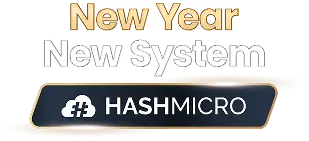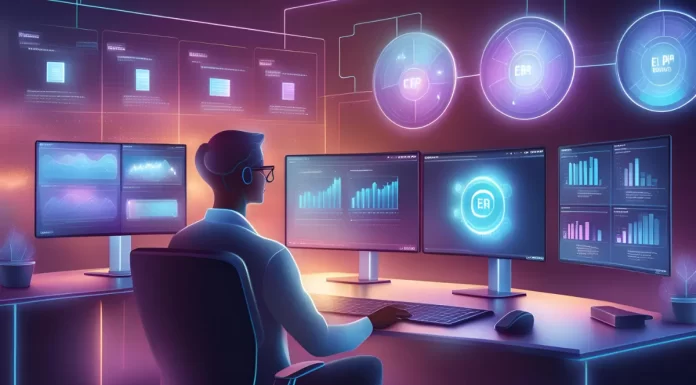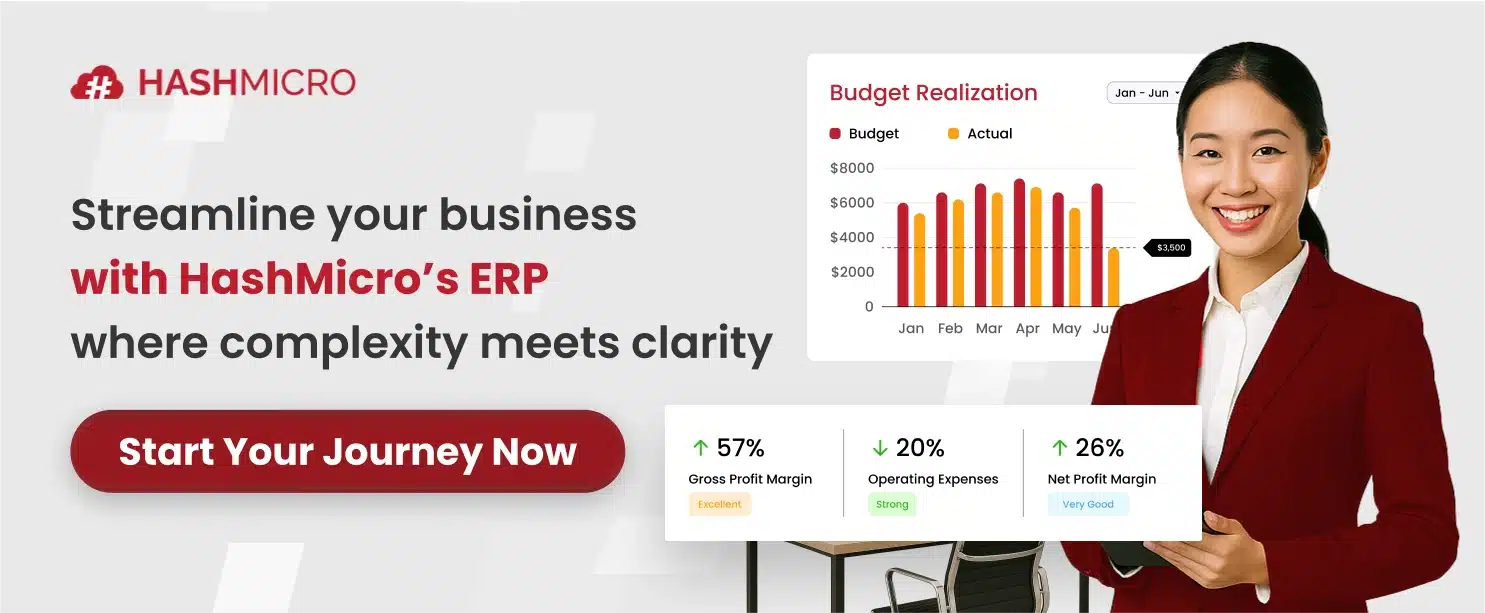I’ve seen how companies constantly push themselves to stay ahead in efficiency, resource management, and product innovation. The competition is fierce, and success often depends on adopting the right technologies.
Two of the most transformative solutions I’ve come across are Enterprise Resource Planning (ERP) and Product Lifecycle Management (PLM). It helps manufacturers integrate critical processes like inventory, order management, finance, and HR.
If you’re in the manufacturing sector, understanding the strengths of both ERP and PLM can make all the difference. That’s why I recommend exploring how these systems work together to create a competitive edge.
Key Takeaways
|
Introduction to ERP and PLM as Pivotal Technologies Driving Manufacturing Success
ERP and PLM are the backbone of business operations in the manufacturing industry. ERP systems handle various business functions such as supply chain management and financials, while PLM systems focus on product development and lifecycle management.
ERP is a software system that integrates and manages important business functions, data, and processes across various departments within an organization. It provides a centralized database and real-time insights and improved decision-making.
On the other hand, PLM, or Product Lifecycle Management, focuses on managing the entire lifecycle of a product from ideation to retirement. It encompasses product design, engineering, collaboration, documentation, and change management.
PLM systems enable manufacturers to streamline product development processes, ensure regulatory compliance, and foster innovation. By leveraging PLM solutions, manufacturing organizations can effectively manage their product portfolios.
By seamlessly integrating ERP and PLM systems, manufacturers in Singapore can harness the synergistic benefits of both technologies. This integration allows for enhanced data visibility and accessibility and efficient resource utilization.
Definition and Core Functionalities of ERP Systems
ERP systems are essential tools for modern businesses, especially in the manufacturing industry in Singapore. ERP stands for Enterprise Resource Planning, and these systems are designed to streamline and integrate various business functions within an organization.]
One of the core functionalities of ERP systems is inventory management. With real-time visibility of inventory levels and automated tracking of stock movements, manufacturers can optimize their inventory control, minimize stockouts, and reduce carrying costs.
Another critical functionality of ERP systems is order processing. By automating the order entry, invoicing, and fulfillment processes, manufacturers can streamline their sales operations, reduce order errors, and accelerate order fulfillment.
ERP systems also provide robust financial management capabilities. They enable businesses to track and manage finances, including accounts payable, accounts receivable, and general ledger.
By leveraging ERP systems, manufacturing companies in Singapore can benefit from enhanced operational efficiency, streamlined resource management, and improved decision-making.
The seamless integration of various business functions within a single system not only eliminates data silos but also enables faster access to critical information, empowering organizations to respond swiftly to market changes and drive continuous improvement.
Definition and Key Components of PLM Systems

In today’s competitive marketplace, effective product development and lifecycle management are crucial for organizations to stay ahead. PLM system are powerful tools that enable businesses to efficiently manage the entire lifecycle of their products.
PLM systems consist of several key components that work seamlessly together to support product development, lifecycle management, and innovation processes:
1. Product Data Management: This component focuses on organizing and centralizing product data, including technical specifications and design documentation. It ensures data integrity, version control, and accessibility for all stakeholders.
2. Product Design and Engineering: PLM systems provide powerful design and engineering tools that enable organizations to create and modify product designs. These tools support various functionalities, such as 3D modeling, simulations, and virtual prototyping.
3. Collaboration and Communication Tools: Effective collaboration between cross-functional teams is essential for successful product development. PLM systems offer collaboration and communication features that allow teams to share information.
4. Product Portfolio Management: This component helps organizations strategically manage their product portfolios and make informed decisions regarding resource allocation, investment, and product retirement. It allows organizations to optimize their product offerings.
By integrating these key components, PLM systems empower organizations to streamline their product development processes, improve time-to-market, reduce errors, and enhance product quality.
Comparison of ERP and PLM Focusing on Their Unique Strengths and Application Areas
ERP systems primarily focus on managing business operations and resource planning. They streamline processes related to supply chain management, production planning, inventory control, and financial management.
By providing real-time data and centralized management capabilities, ERP systems optimize operational efficiency and promote effective resource allocation within manufacturing organizations.
On the other hand, PLM systems are dedicated to product development and managing the entire lifecycle of a product. They encompass functionalities such as product design, engineering, collaboration tools, and portfolio management.
With PLM systems, organizations can efficiently manage product data, track changes, and foster cross-functional collaboration, thereby driving product innovation and ensuring successful introduction and retirement of products.
The unique strengths of ERP and PLM make them indispensable for different areas of manufacturing. PLM systems enable organizations to innovate and bring new products to market effectively.
Here is a table summary that discusses the comparison of ERP and PLM, focusing on their unique strengths and application areas:
| Key Comparison | ERP | PLM |
|---|---|---|
| Primary Purpose | Manages business operations and resource planning. | Manages product development and the entire product lifecycle. |
| Core Functions | Supply chain management, production planning, inventory control, and financial management. | Product design, engineering, collaboration, and portfolio management. |
| Data Management | Centralized management of operational and financial data. | Centralized product data, version control, and change tracking. |
| Key Benefit | Optimizes operational efficiency and resource allocation. | Drives innovation and ensures successful product launch and retirement. |
| User Base | Operations, finance, procurement, and HR. | Engineering, R&D, and design teams. |
| Impact on Business | Reduces costs, improves productivity, streamlines workflows. | Accelerates product development, improves collaboration, and supports regulatory compliance. |
Discussion on How ERP and PLM Address Different Business Needs Within The Manufacturing Sector
ERP systems are designed to cater to the operational and financial needs of manufacturing organizations, enabling them to streamline their supply chain management, enhance production planning, and ensure accurate financial tracking.
These systems provide a comprehensive and integrated approach to managing various business functions, helping manufacturers achieve operational efficiency and effectiveness. On the other hand, PLM systems focus on supporting the product development and innovation processes.
By facilitating collaboration, document management, and version control, PLM systems empower manufacturers to improve their product design and engineering capabilities, enhance communication and collaboration among cross-functional teams.
By implementing both ERP and PLM systems, manufacturing organizations can bridge the gap between their operational and product-related needs. While ERP systems optimize business operations and resource management, PLM systems foster innovation and effective lifecycle management.
Together, these systems provide a holistic approach to managing the diverse requirements of the manufacturing sector, helping organizations achieve sustainable growth and competitive advantage.
Synergistic Integration of ERP and PLM

Integrating ERP and PLM systems is strategically important for holistic business management in the manufacturing sector. The synergistic integration of these technologies allows for seamless data sharing and enhanced visibility across the entire value chain.
By integrating ERP and PLM systems, manufacturing organizations can achieve better control, efficiency, and innovation in their operations. ERP systems provide the foundation for managing operational and financial aspects of the business, while PLM systems focus on product development and lifecycle management.
The integration of ERP and PLM enables manufacturers to streamline processes, eliminate redundant data handling, achieve cost savings and improve decision-making by leveraging real-time information from both systems.
The image above represents the concept of holistic business management, which is made possible by integrating ERP and PLM systems. It symbolizes the interconnectedness of various business functions and departments, resulting in a unified and efficient operation.
Sequencing ERP and PLM Deployments
When implementing ERP and PLM systems, organizations in Singapore must carefully consider the sequencing of deployments to align with their business priorities and long-term goals.
The decision of whether to implement ERP or PLM first depends on the specific needs of the organization, taking into account factors such as the existing infrastructure, current pain points, and strategic objectives.
It is often recommended to adopt a phased implementation approach to minimize risks and ensure a seamless integration of ERP and PLM systems. This approach allows organizations to gradually deploy these technologies.
By taking a strategic approach to ERP and PLM deployment, organizations can effectively address their immediate business priorities while laying the foundation for long-term success.
Conclusion
In Singapore’s competitive manufacturing landscape, ERP Software helps streamline your manufacturing business operations, manage resources efficiently, and optimize the product lifecycle.
Integrating the HashMicro ERP system will enable your business process optimization, drive innovation, and strengthen your market edge for both immediate results and long-term growth.
HashMicro ERP equips your team with the tools to make smarter decisions, respond faster to market demands, and maintain a competitive edge. Get a free demo today
and start transforming your manufacturing operations.
Frequently Asked Questions
-
What is the difference between ERP and PLM?
ERP (Enterprise Resource Planning) manages core business operations like finance, HR, inventory, and production. PLM (Product Lifecycle Management) focuses on managing a product’s lifecycle from design and development to retirement.
-
Can ERP and PLM work together?
Yes. Integrating ERP and PLM enables seamless data flow between product development and operational processes, improving efficiency, collaboration, and decision-making.
-
Which one should my manufacturing business implement first?
It depends on your priorities. If operational efficiency and resource management are urgent, start with ERP. If innovation and product development are key, implement PLM first. Ideally, integrating both delivers maximum benefits.















